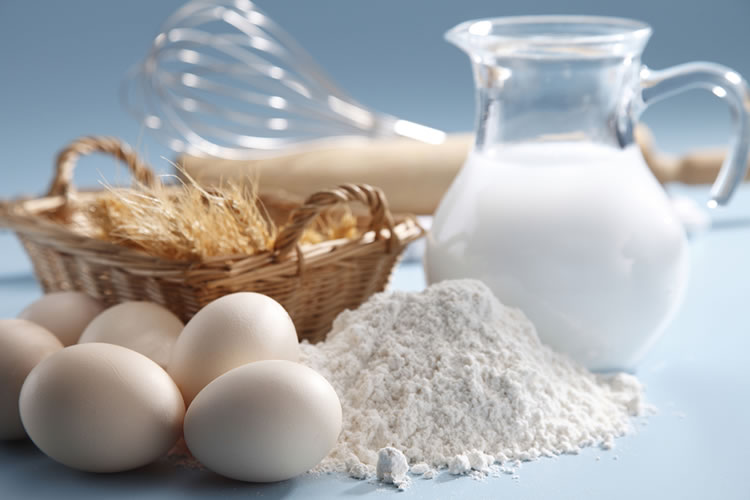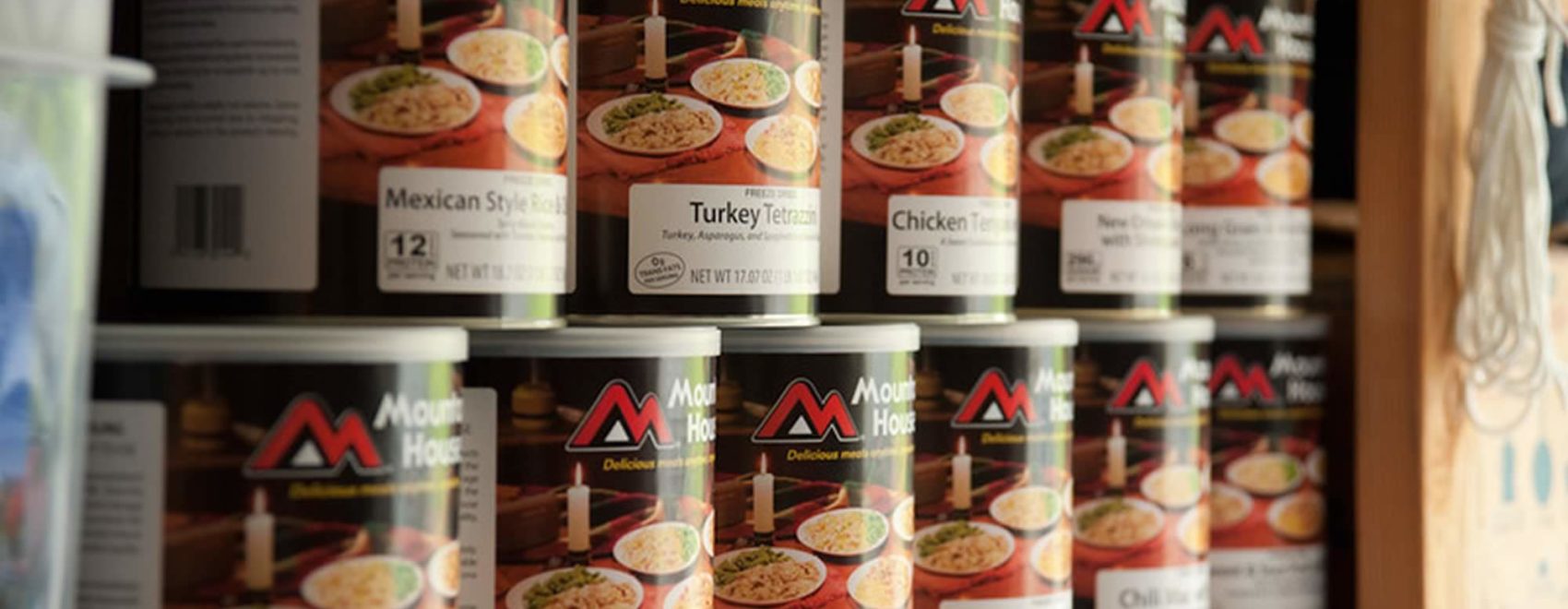Survival Food Storage … Ingredients Matter.
Garbage and empty calories can deceive you …

Some “experts” in emergency preparedness will tell you that the quality of the food you store doesn’t matter, as long as you have food stored and it is food that will last for a long time without spoiling. The logic is something along the lines of you’ll eat anything if you’re hungry enough.
It is probably true that it’s better to have something stored than to have nothing; however, in an emergency more than any other time, it’s crucial to be filling your body with nourishing ingredients that will keep you in top form rather than ingredients that could leave you susceptible to sickness and less-than-ideal mental and physical health.
If your motive in building up food storage is to protect your family, then truly protect your family–from starvation and also from sickness and disease that can be caused by harmful ingredients in food.
With that said, emergency food is made to last a long time. In order to make their foods last, some emergency food companies cut corners and add a variety of artificial preservatives, dyes, and flavors to their emergency foods.
This is an important thing to watch out for when selecting your food storage. Here are a few considerations to keep in mind as you look around.
Avoid hydrolyzed yeast extract and similar flavorings.
Hydrolyzed yeast extract is a controversial ingredient found in many packaged foods and very commonly in Survival Food Storage items. It is primarily used as a flavor-enhancer and is created by breaking down yeast cells.
The FDA classifies yeast extract as a natural ingredient, but according to many health experts, yeast extract is a cheaper alternative to monosodium glutamate (MSG) and actually does contain some MSG.(2) Some health and consumer advocates go so far as to say that labeling something as containing yeast extract is just an underhand way food companies can get around saying that a product contains MSG.(3)
Most people have heard the negative press about MSG.
Consumption of MSG has been linked to a variety of scary conditions, including headaches, numbness in the face and neck, heart palpitations, chest pain, nausea, weakness, appetite control problems, and a host of other negative symptoms.(2) It’s not an ingredient to mess around with, especially not in food that is supposed to sustain you in an emergency.
Even if you don’t believe all the negative press about yeast extract and MSG, added flavorings like yeast extract are simply unnecessary in food packaging, and consuming emergency foods that contain added flavorings and preservatives would only expose you to more risks in what would presumably already be a risky situation.
To be safe, look for emergency foods that are free of hydrolyzed yeast extract and other artificial additives. For a good list of other additives that are linked to MSG, check out the following articles:
Look for GMO-free foods
An equally important consideration to make when looking for emergency food is to be sure it is free of genetically modified ingredients.
Genetically modified foods are another controversial topic in the world of food and nutrition.
Genetically modified organisms are created by taking the genetic material of one organism and inserting it into the genetic code of another organism. This bold practice is becoming more and more widespread but is widely acknowledged as a risky and understudied process.
Many experts opposed to genetically modified foods argue that despite the increasing insertion of GMO ingredients into mainstream foods, there has not been adequate testing on human subjects and there are still too many unknowns about the health effects these human-engineered foods could have.

Some health groups, like the Center for Food Safety, have gone so far as to claim that genetically modified foods can increase the likelihood of antibiotic resistance, immune-suppression, and even cancer.(4) Why put your family at risk with ingredients that are untested when you will have an abundance of other worries in a survival situation?
Because the use of genetically modified food is becoming such a widespread practice in manufactured foods, very few emergency foods are free of GMO ingredients.
However, there are a few companies that produce emergency foods that are GMO-free. If this is an issue that is important to you, when choosing food, check to be sure that the emergency food is CERTIFIED GMO-free. Some companies may claim to be free of genetically- modified ingredients, but without the certification, there is no proof.
Other ingredients to be wary of:
Other health considerations you may want to make are to check for amounts of
- cholesterol
- trans fat
- and sodium.
Packaged foods often have high amounts of these three things, and emergency foods are no exception. Some high-quality emergency food brands are conscientious about their amounts of cholesterol, trans fat, and sodium, but you have to read the labels to be sure.
Make sure your food storage ingredients will stand the test of time.
While still being healthy, emergency food, of course, needs to be able to last. As you look for the right emergency food for you, be aware that some food storage companies haven’t done their research when it comes to ingredients that keep.
As a result, they incorporate ingredients into their emergency food that go bad after a relatively short period of time. Canola oil, for example, will only last a year before it goes rancid, thus spoiling whatever Survival Food Storage it is used in. Amateur food companies who don’t know better will use canola oil in their granola to make the clusters stick together. Uneducated food buyers end up with a worthless product after just a year.
Consider preparation requirements
Another important aspect of emergency food to take into consideration is the preparation of different types of food storage.
Many Survival Food Storage options are based on the assumption that when you use them you will have power and a method of cooking. Some examples of these options are bulk dry items like grains and legumes. It is possible that power will be available in an emergency situation, but often natural disasters involve the loss of power for periods of time.
Think through what conditions might be like if you are forced to live off of your Survival Food Storage and have no power or electricity. Baking bread and using your wheat may be difficult to do. Unless you have alternative cooking methods, heating water and boiling anything will be impossible. For these reasons, you may want to consider starting with easy-to-prepare meals as a foundation for your food storage. Meals that are ready to eat or meals that only require water to be ready are some examples. These options might be much more feasible in a crisis situation.
The bottom line is that it’s important to know what goes into your food storage food. You are taking the time to buy emergency food; why not also take the time to do some research on the food you are buying to be sure it will contribute to the health and well- being of you and your family in a disaster.

